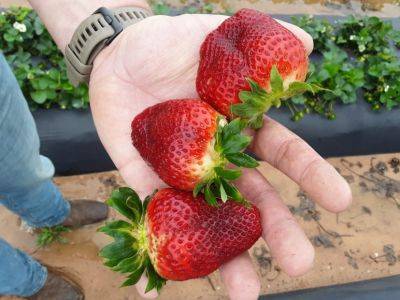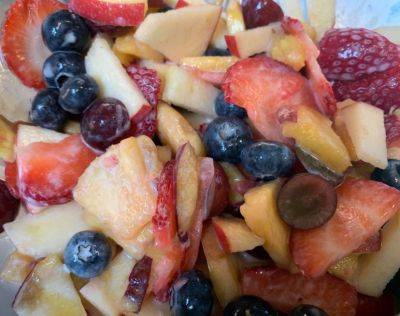Rob Last reports, “The first of this season’s strawberries are coming to market with good quality. Growers still need to be very mindful of spider mites. Populations are around in the area but are variable. As we get into harvest season, gray mold management will be critical, so sanitation and appropriate fungicide applications will be needed. Otherwise, preparations for watermelon planting and some early cantaloupes have been sown. Damage assessments on later variety peaches will continue.”
Strawberries Ideas, Tips & Guides
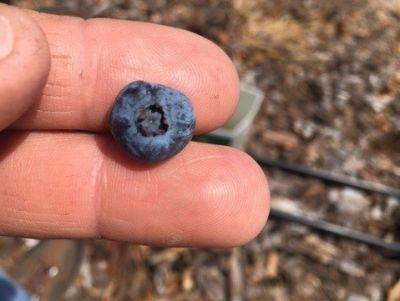
SC Fruit and Vegetable Field Report – May 02, 2022
Zack Snipes reports, “It seems like everything happened all of a sudden this week. We are flushed with strawberries right now. I am seeing some anthracnose on berries and lots of spider mites. We only have a few weeks left in the season so take care of your crop to improve your bottom line. The tomato crop looks ok and, for the most part, disease-free. I saw a good number of issues on all types of squash this week. I received calls about yellowing and wilting squash. Upon further examination, we had a serious squash bug issue. They feed on the base of the plant and will make very healthy plants wilt. They are very good at hiding under the stems, in debris, or under the plastic, so stay still in one spot for a few minutes when scouting for them. I also found some powdery mildew on our squash.”
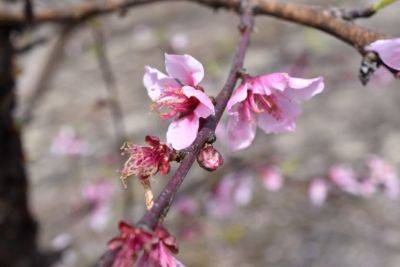
SC Fruit and Vegetable Field Report – March 21, 2022
Rob Last reports, “Starting with strawberries, spider mites are increasing in the area with eggs and adults warranting treatment. Strawberry crops are very susceptible to mite damage at the moment. Remember to sanitize plants by removing dead flowers and fruit to mitigate against disease. We have lost some brassica crops due to the freeze; if the growing point is intact, the crops may recover with reduced yields possible. There will be a peach crop. Early peach varieties have been hit quite hard in the area, with later varieties looking promising. Blueberries will make a crop, but again, there are varying levels of damage.”

SC Fruit and Vegetable Field Report – April 4, 20222
Zack Snipes reports, “It finally feels like spring in the fields. The strawberry crop is really behind schedule this year. Most farms have plants with 3-4 crowns on them. In most years, we have 5-8 crowns at this time. I blame the cool weather right after we planted them and then an unseasonably warm winter followed by two really cold events recently for them being so far behind. I am seeing an uptick in spider mite populations, so scout, scout, scout this week. This warm weather will have them active. Spring planted crops are germinating or being transplanted and have no issues so far.”
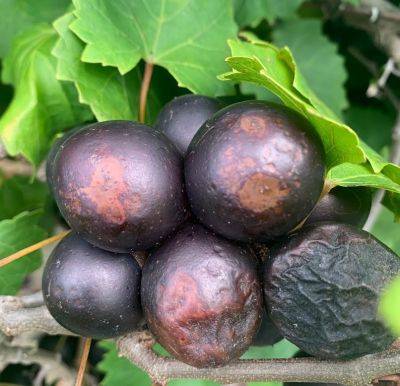
SC Fruit and Vegetable Field Report – September 12, 2022
Rob Last reports, “Fall watermelons are looking good. There is some disease around, so fungicide applications remain crucial. I am finding whiteflies in a few crops too. As we move into Fall, with increasing numbers of misty mornings, scouting for diseases is going to be very important. Mists will increase periods of leaf wetness exacerbating disease pressures in crops. Scouting enables us to make timely applications. Thoughts are turning to planting Fall crops, and I urge everyone to check transplants carefully to minimize the risk of bringing infected plants into the fields, storing problems for the rest of the crop cycle.”

SC Fruit and Vegetable Field Report – August 15, 2022
Zack Snipes reports, “We are in our lull period of production right now for the most part. Okra is coming in very strong in high volumes. It’s getting difficult to pick it all. Fall watermelons and pumpkins are starting to run. Make sure to stick to a tight spray plan for fall melons as downy mildew, powdery mildew, viruses, whiteflies, cuke beetles, melonworms, and pickleworms can quickly devastate a crop. You can find a weekly spray guide in the Disease section of the SE Vegetable Crop Handbook. Some growers are preparing the ground for strawberries as it won’t be much longer before we’re planting. A few growers in the Coastal counties have switched to using 2 rows of drip tape on their berries. Sometimes I see sections of the field that don’t look as great as other sections. Oftentimes I will find the drip tape has migrated to one side of the bed, causing stunted growth on the other side. This can be solved by adding another line of drip in the bed. Just some food for thought as you are preparing your fields.”

SC Fruit and Vegetable Field Report- August 22, 2022
Justin Ballew reports, “We had a few rain events last week, and temperatures were a little cooler. Fall planted crops are growing really well right now, but due to the recent moisture, we need to pay close attention to our disease management programs. In pecans, I’m not seeing many additional nuts dropping. Hopefully, we won’t lose any more between now and harvest. Scab is still being managed well, but we are seeing some signs of black aphids. The treatment threshold for black aphids from now to harvest is 15% of terminals (check all the leaflets on a terminal bud) have one adult aphid and nymph cluster present.”

SC Fruit and Vegetable Field Report – July 25, 2022
Rob Last reports, “In a wide range of crops insect and disease pressure is high, with gummy stem blight across all cucurbit crops and downy mildew is also very active. Fruit rots, including anthracnose and Phomopsis blight, are also readily found. That being said, the quality of crops being harvested is still very good and is a testament to the attention to detail being paid by growers. As we move into August, thoughts are switching towards fall planting and preparations, including fertility building cover crops, ordering next year’s strawberry plants, and field cultivation. I know it seems a long way away, but now is the time to order strawberry plants to ensure you get the varieties best suited to your own enterprises.”

SC Fruit and Vegetable Field Report – September 26, 2022
Rob Last reports, “Sweet potatoes in the area are coming to harvest along with fall watermelons, squash, and zucchini. Diseases are present in the cucurbits, particularly downy mildew in cucumbers and gummy stem blight in watermelons. Please remember to keep fungicide applications up to date until the last harvest. As our thoughts turn to fall cropping, I am finding imported cabbageworm and diamondback moth on transplants. Remember to rotate the modes of action of insecticides to get good control. Where brassica will be transplanted, carefully consider an application of herbicide. The herbicides will make life easier but choose carefully based on your rotation and expected following crop.”
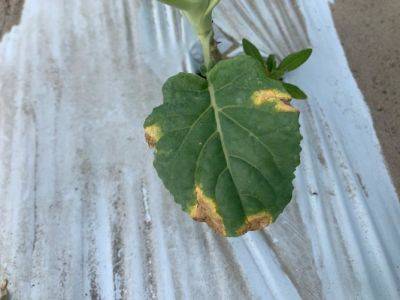
SC Fruit and Vegetable Field Report- October 3, 2022
Zack Snipes reports, “What a wild week we had with the hurricane, rain, and storm prep. Overall, the Lowcountry dodged most of the wind and water. While we still had wind gusts exceeding 45 mph and several inches of rain, most of the crops pulled through. It seems that the amount of rain depended on what band of the hurricane passed. Downtown Charleston and James Island received 10+ inches of rain, while the Coastal REC, just a few miles away, received half of that. Some crops got beat up a bit, but I have heard no reports yet of a total crop loss. Before the storm, I went out and about and found lots of lepidopteran pests (diamondback moth larvae, cutworms, melonworms, pickleworms, imported cabbage worms, and an assortment of armyworms…I feel like Bubba Gump here). I also saw a good bit of black rot on brassicas and plenty of downy mildew. I suspect with the wind and rain that, these diseases will really pick up this week and next. Many growers are putting the finishing touches on strawberry plastic and seeding fall carrots, turnips, beans, arugula, radish, etc.”

SC Fruit and Vegetable Field Report – November 14, 2022
Zack Snipes reports, “We missed a lot of rain and wind from the hurricane that came through. The rain was much needed. We got pretty chilly last night, which will really help all of our fall crops. Strawberry cut-offs are starting to push out, which is always a relief for growers. I’ve gotten many questions about using products to manage phytophthora root rot in strawberries. Unless you have had specific issues in a field before, your plants are suspect of the disease, or we have copious amounts of rain, I’m not sure there is a good return on investment for running products through the drip. When we preventatively apply these products, we also run into resistance issues in seasons down the road.”

SC Fruit and Vegetable Field Report – November 7, 2022
Rob Last reports, “Strawberry plants have arrived in the last two weeks and are in the ground. Overall, the plantings look good. One thing to consider is using overhead irrigation to establish the plants. Given the dry soil conditions, irrigation will be critical. We did receive some welcome but variable showers over the weekend, totaling between 0.1 and 0.3 inches of rain, which will be insufficient for the strawberry establishment and crop development. Fall brassicas in the area are currently developing well with few disease issues. However, I am finding increasing numbers of diamondback moths, imported cabbageworms, and a low incidence of whitefly activity. Remember to rotate the modes of action for insecticides to prevent resistance. Remember to treat early, as smaller larvae may be easier to control. Scouting is critical.”
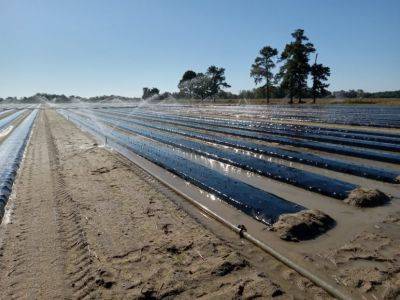
SC Fruit and Vegetable Field Report – October 24, 2022
Check out the new rainfall calculator on the Clemson Weather website. This feature calculates the amount of rainfall received in a particular location over a specified time.

SC Fruit and Vegetable Grower Field Report – October 31, 2022
Zack Snipes reports, “It’s been a very cloudy and humid week in the Lowcountry. The temperatures are perfect, but the lack of sunshine has plants in a holding pattern. It has been very great strawberry planting weather. Most farms are finished up or are about to finish up this week. Overall, plants are clean with no insect or disease issues, but they are very small. If you have small plants, I recommend covering them here in a few weeks with a lightweight row cover to encourage fall growth before winter. Make sure you go behind your planting crews to make sure they are planting properly. I have seen “J-rooted” bare root plants and plugs planted too deep. Even the most experienced crews should be monitored carefully while planting. Our yield drag begins at planting if planted incorrectly.”
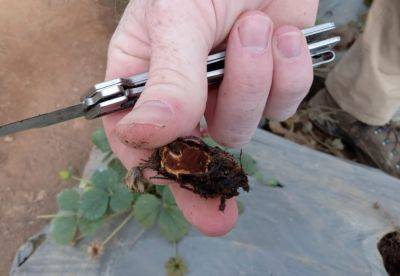
What Is It? Wednesday – Phytophthora Crown Rot
This dark reddish/brown discoloration in the crown is a typical symptom of Phytophthora crown rot. The first observable signs of this disease include wilting and browning of the leaves in the field.

SC Fruit and Vegetable Field Report – November 21, 2022
The effect of row covers on spider mite pest problems is not entirely clear. Studies in NC found that row covers did not influence spider mites during cold winters and when transplants were NOT infested with spider mites initially. Mite-infested transplants will likely fare worse. During warmer weather, extended row cover use appeared to exacerbate spider mite problems. Lastly, if you plan on buying and releasing predatory mites, you must release them when spider mite populations are still low and also avoid using broad-spectrum insecticides (e.g., pyrethroids). Some acaricides are also safer than others (e.g., Acramite and Nealta are safer than abamectin products). Furthermore, sulfur-based fungicides can also be harmful to predatory mites, so avoid spraying these fungicides immediately before or after releasing any predators.”
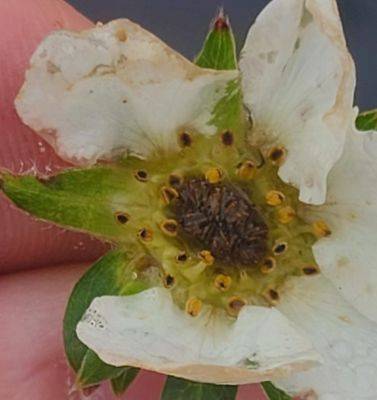
SC Fruit and Vegetable Field Report- February 6, 2023
Guido Schnabel reports, “The new year started with a disappointment and scare for some strawberry growers. Stunted plants, gaps in the strawberry rows, and leaves dying. The extent of the damage is yet to be determined, but it will be substantial. Most of the affected growers received the plants from the same nursery source, and it is very likely the problem is nursery derived. After talking to growers, meeting up with agents, and collecting samples for problem ID at the Clemson University Plant and Pest Diagnostic Clinic, the verdict is out. Gnomonia leaf blotch (Gnomonia comari) was the main cause of older leaf decay stunting many plants. This fungus is not known to be an aggressive pathogen but can, in some instances, break out in nurseries and continue to do harm on transplants after planting. The disease should start to fade in the spring as the weather warms up, together with sanitation and regular fungicide applications. Some plants at the same location did test positive for Phytophthora and the relatively harmless Pestalotiopsis, and by now, we all know there is a new aggressive species out there (Neopestalotiopsis spp) that can devastate production. We are lucky to have a diagnostic clinic that now offers a molecular test for distinguishing the mild from the aggressive Pestalotiopsis species. This molecular testing verified most farms do not have the aggressive species. We do have ONE Neopestalotiopsis-positive farm, however, and we must hope that sanitation, aggressive and strategic fungicide applications, and a dry spring/early summer will help to mitigate the damage.”
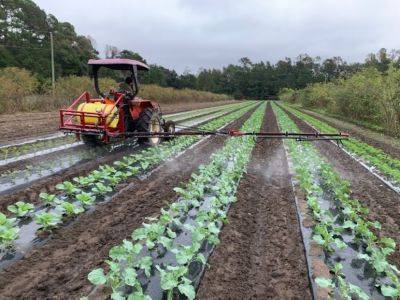
SC Fruit and Vegetable Field Report – November 28, 2022
Today’s update will be our final update of 2022. With things slowing down in the field, we will take some time to focus on other projects, and the Weekly Field Updates will resume in January.

SC Fruit and Vegetable Field Report- January 17, 2023
The Weekly Field Updates are back for 2023! We hope everyone had a great holiday season and is off to a good start this year. We have lots of fruit and vegetable meetings over the next couple of months, so check out the Upcoming Events tab for the complete lineup. This week there will be a Cut Flower Grower Meetup in Columbia on 1/18.
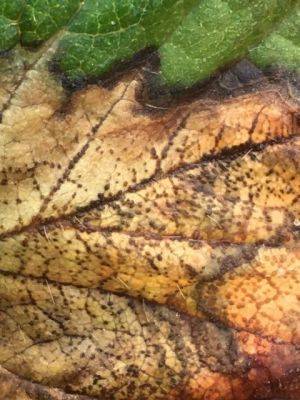
SC Fruit and Vegetable Field Report – January 23, 2023
Rob Last reports, “Crops are benefiting from the recent warmer weather, with new leaves pushing out on strawberries and buds beginning to break in other crops. Following the rainfall over the weekend, the disease may start to be an issue, particularly in frost affected plants. The key will be to continue to scout often to monitor any changes to the crops.
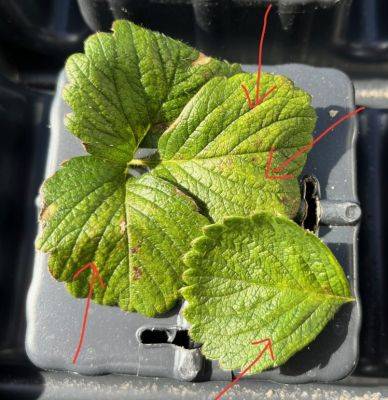
What Is It? Wednesday – Spider Mites on Strawberries
The stippling effect seen on the upper surface of this strawberry leaf is caused by two-spotted spider mite feeding damage. When the mites pierce the epidermis of the leaf to extract the sap, the cells begin to collapse, forming a chlorotic region of the leaf.
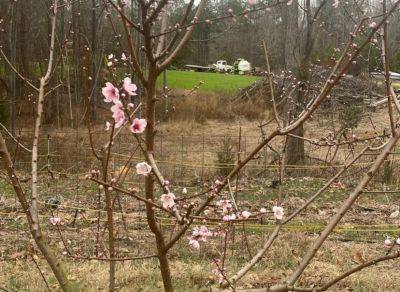
SC Fruit and Vegetable Field Report – February 13, 2023
Tom Bilbo reports, “When scouting strawberry fields for spider mites, also keep an eye out for naturally occurring predatory mites, such as the [potentially] highly effective specialist predator Phytoseilus persimilis (see picture). Sampling conducted in spring 2022 across Lowcountry strawberry farms detected this predator in all six fields sampled; however, in most cases, they appeared ‘too little, too late’ to suppress spider mites in a timely matter. Purchasing and releasing predatory mites can be a very effective approach, but most research to date has been conducted in the large strawberry systems of CA and FL. This spring, I am initiating research on how to release predators in SC strawberry fields to determine an approach that is both effective and economical. Whether predatory mites are naturally occurring and/or released into fields, the single most important factor in their success is the use of compatible insecticides. Pyrethroid insecticides (IRAC group 3) are highly toxic to predatory mites and are virtually guaranteed to kill them in your field. If needed, apply instead any number of the much more selective acaricides available that have been shown to be compatible with predatory mites, including the active ingredients bifenazate (Acramite), cyflumetofen (Nealta), and abamectin (Agri-Mek). Once the research is conducted for SC strawberries, I will write a separate post specifically outlining how to utilize predatory mites. Until then, you can find more information on predatory mites here from my research in NC tomatoes.

SC Fruit and Vegetable Field Report – February 20, 2023
Tom Bilbo reports, “If you’re growing strawberries in the warmest parts of the state and you haven’t been checking and/or spraying your fields for spider mites, you’re going to want to. Last week my team and I sampled 8 strawberry fields throughout the Lowcountry and Midlands. Nearly all fields in the Lowcountry had either high or rapidly building mite pressure. We saw lots of spider mite eggs that are all going to hatch this week as the mites soak up the warm, dry weather. Fields in the Midlands looked much better (but this could change in a week or two). Spider mites either hadn’t established yet or had recently established and were still highly aggregated in ‘hotspots.’ We did detect beneficial predatory mites at two locations, so if you want these predators to help you in managing spider mites, stay away from applying bifenthrin and instead use a miticide that is much more compatible with the beneficials. Look at the2022 Strawberry IPM guide (pg. 29-31) for a full list of recommended miticides for both conventional and organic systems.”
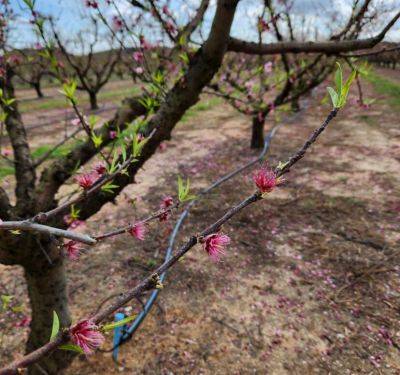
SC Fruit and Vegetable Field Report- March 6, 2023
Rob Last reports, “Fruit crops are all developing well with good fruit set and flowering. Strawberry crops are beginning to ripen, heralding a fresh taste of spring. Pests and disease remain low, and I would urge vigilance and continued monitoring for spider mites. If you haven’t already, protectant fungicide applications will be beneficial to counter gray mold and anthracnose fruit rots. Early peaches are in full flower with some early fruit set. Later varieties are beginning to flower. Land preparations for spring plantings are progressing well, given the dry weather and occasional showers. The first asparagus crops in the area are now being harvested with excellent quality.”

SC Fruit and Vegetable Field Report– February 27, 2023
Rob Last reports, “After a warm week in the Lowcountry, we received some welcome showers. The rainfall will aid in cultivating and bed formation for spring crops. Beds should be firm, level, and well-consolidated with a clearly defined shoulder. These factors will aid in fertigation operations and plastic laying. Remember that a well-constructed bed should display an indentation of 0.5 to 1″ when a 150 lb. person stands in the center of the bed. Last week’s warm weather has pushed crops, with strawberries, blueberries, and peaches coming into flower. Spider mites are being found, particularly in strawberries. Vigilant scouting and applications of mite-specific products will likely be necessary. Again with strawberries, we see fruit set and development. Disease pressure currently is low, but we will see gray mold developing.”
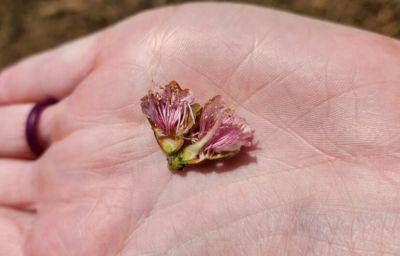
SC Fruit and Vegetable Field Report – March 21, 2023
Sarah Scott reports, “Temperatures dropped below freezing along the Ridge two mornings last week. We’ve been checking peaches over the past few days to assess the damage. Right now, it seems a lot of early varieties will be hit pretty hard. Just from what I’ve checked, if there were still blooms present, there was some protection from the cold, but if there was no petal or shuck present, the fruit was very vulnerable and suffered damage. It will still take some time to know the extent of damage to the peach crop, but it is safe to say we did receive damage. We still have below-freezing temperatures in the forecast, so we will just have to wait a bit to really know the crop outlook. Strawberries were covered for the cold mornings last week. These crops look good after removing the covers. It’s important to maintain a good spray schedule and sanitation as best you can in between covering and uncovering.”
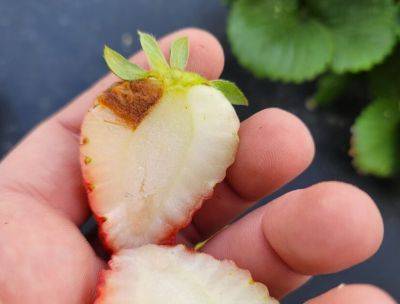
SC Fruit and Vegetable Field Report – March 27, 2023
Zack Snipes reports, “Things are really moving with the nice weather recently. We are in the period where we are harvesting and planting and getting fields ready. Growers are extremely busy. The late spring or early summer crops that were bitten by the cold a few weeks ago seem to have bounced back and are now in an aggressive growth phase. I received some photos of cucumber beetles and yellow-margined leaf beetles in Asian greens and other mustard-type greens this week. These pests are very persistent and need to be managed with broad-spectrum insecticides on a 5-7 day interval for a few weeks. We need to get on top of the populations before the numbers get out of control. I visited a few strawberry fields this past week and guess what I found???…spider mites and gray mold…shocking right? We cannot plant strawberries, walk away, and expect good yields and healthy fruit. This grower had botrytis (gray mold) on 99.999999% of his berries.”
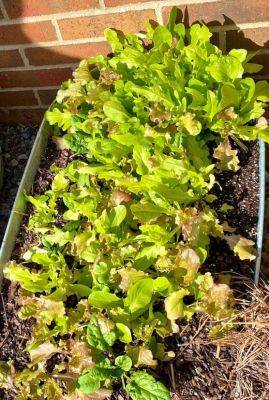
“Spring Cleaning” Our Eating Habits
Spring has officially sprung here in South Carolina. While we are all familiar with the term “spring cleaning” when it comes to our homes, there is another aspect of our lives that could use some decluttering: our eating habits. By implementing these simple nutrition tips, we not only improve our health but also improve the environment and our communities.
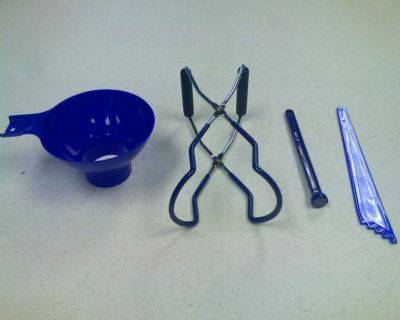
Canning Tools
The canning lid lifter/lid wand is a magnet attached to a short plastic stick and is a useful tool for lifting metal lids from hot water. Lid wand brands include Back to Basics, Ball, Harold, Norpro, Presto, RSVP, and Victorio. For several years lid wands have been available online and in-store from vendors that sell canning supplies (including kitchen supply stores, hardware stores, department stores, and big box stores).
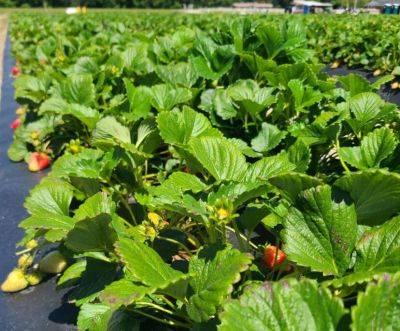
SC Fruit and Vegetable Field Report – April 24, 2023
Tom Bilbo reports, “Cyclamen mites are another pest mite of [possible] concern for SC growers, and you should know what to look for as I have confirmed their presence on several farms this spring, and several county agents have detected them in previous years. These mites are smaller than spider mites and require a microscope to see them, so you must look for their symptoms—stunted plants (see red circle in picture), crinkled/deformed leaves, small leaves, shrunken fruit with protruding seeds. If you see these symptoms and cannot attribute them to another cause (e.g. stunted plants from transplanting crowns too deep), contact your local county agent to assist with collecting samples and confirming their presence. My lab has ongoing research this spring to collect and confirm the occurrence of cyclamen mites in SC to better determine their pest status.”
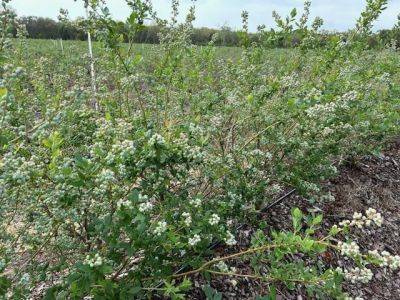
SC Fruit and Vegetable Field Report – April 10, 2023
Rob Last reports, “It has been another variable week in the low country with 1.6” of rainfall recorded and wide temperature variations. The rain has been beneficial in establishing cucurbit crops, both cantaloupes from seed and watermelon transplants. Early planted watermelons, planted under plastic covers, have had covers removed and are approaching vine run. At this point, managing gummy stem blight and preventing bacterial fruit blotch will be critical. Many growers are busily transplanting watermelons. Again, disease management begins now. As per the Watermelon Fungicide Guide Land Grant Press Publication 1001, Chlorothalonil effectively prevents many foliar diseases. If bacterial fruit blotch is a concern, I recommend switching to a mancozeb application with fixed copper. Mixing fixed copper and Chlorothalonil will lead to phytotoxicity. In strawberry crops, we see increasing levels of botrytis (gray mold) allied to the wet weather and water-soaked berries, leading to a source of inoculum. Blueberries are coming to harvest with excellent quality and volume.”
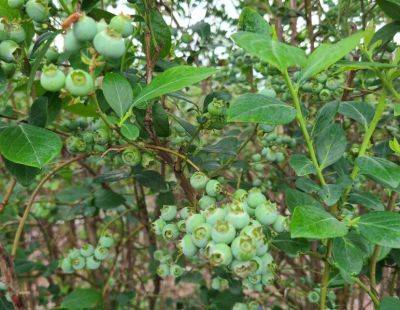
SC Fruit and Vegetable Field Report
Rob Last reports, “The area has had another warm week with excellent crop development. Strawberry crops are loading up with good volumes coming to harvest. Remember to scout fields paying close attention to spider mites. Where specific miticides have been applied, control is excellent. A further miticide will be required where a broad-spectrum insecticide has been used. We are finding gray mold and anthracnose. These diseases will likely increase following the rainfall last week. Remember to rotate fungicides with different FRAC codes to prevent resistance and focus on hygiene and sanitation. Blueberries are looking very good, with excellent fruit development. Pest and disease issues are looking good, but remember to scout and rotate pesticides, as with strawberries. Cold assessments with peaches are continuing. Cantaloupes are in the ground and just beginning to emerge. Watermelons will begin to be planted this week, while crops under plastic tunnels will be uncovered this week. Spring is definitely in the air as we head into April.”
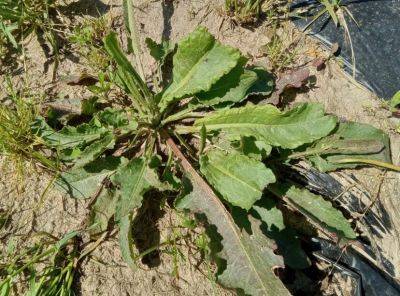
What Is It – Wednesday? Curly Dock
This is curly dock (Rumex crispus). Curly dock is a perennial weed that thrives in wet conditions but is also quite tolerant of drought.

Strawberry Fruit Leather
Growing up, I was one of the many kids who loved rolled-up fruit snacks. Even today, I can eat one and think fondly of playing outside as a kid. Now, I make my own tasty, chewy, dried fruit snacks called fruit leathers.
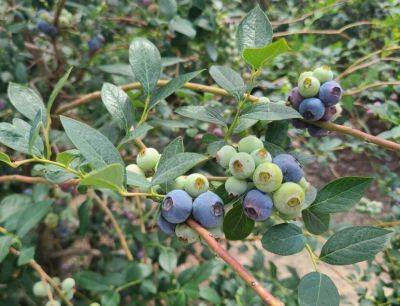
SC Fruit and Vegetable Field Report- May 1, 2023
Tom Bilbo report, Check out the updated Strawberry IPM Guide, now available on the Southern Region Small Fruits Consortium website.
Popular Topics
Our site greengrove.cc offers you to spend great time reading Strawberries latest Tips & Guides. Enjoy scrolling Strawberries Tips & Guides to learn more. Stay tuned following daily updates of Strawberries hacks and apply them in your real life. Be sure, you won’t regret entering the site once, because here you will find a lot of useful Strawberries stuff that will help you a lot in your daily life! Check it out yourself!
